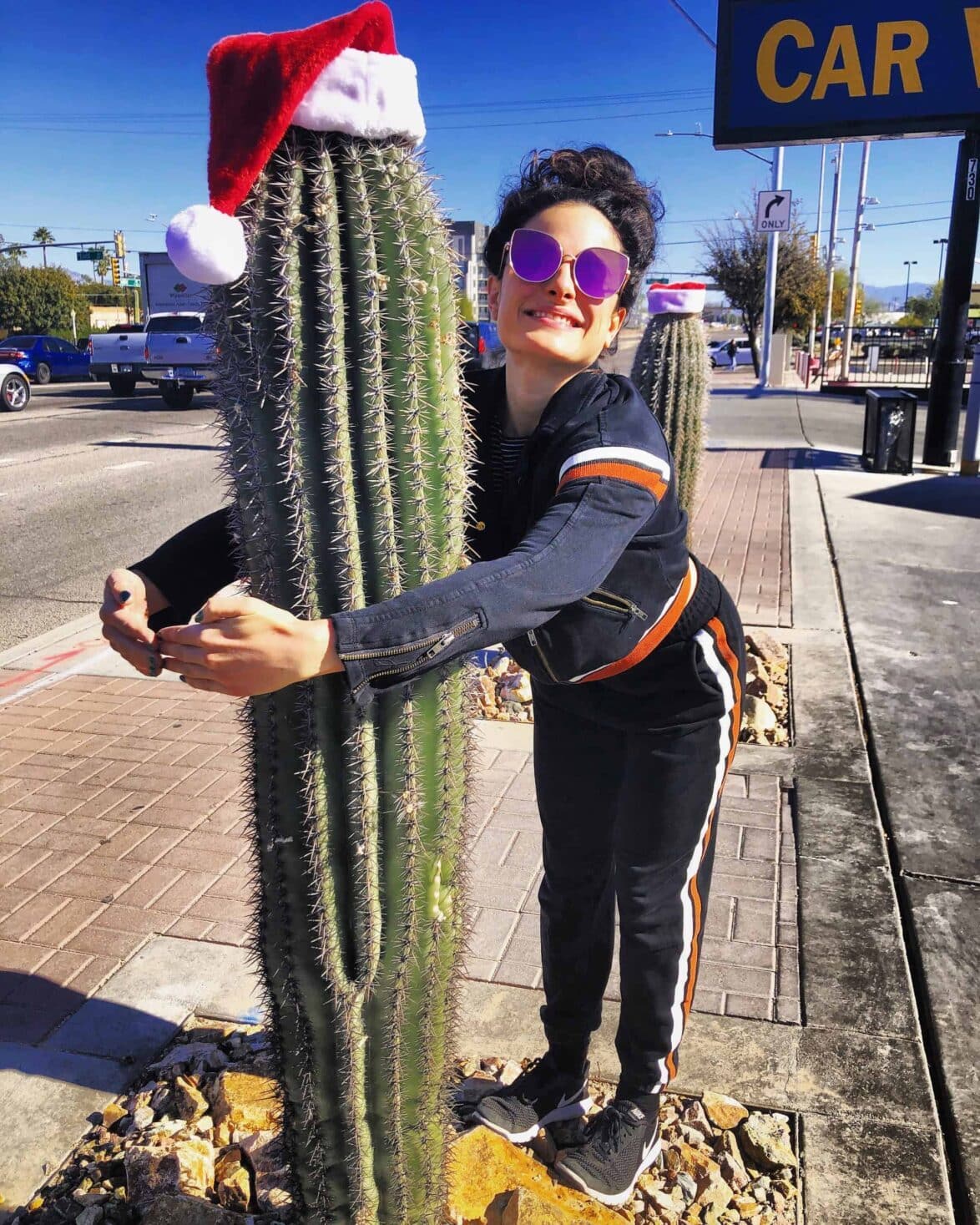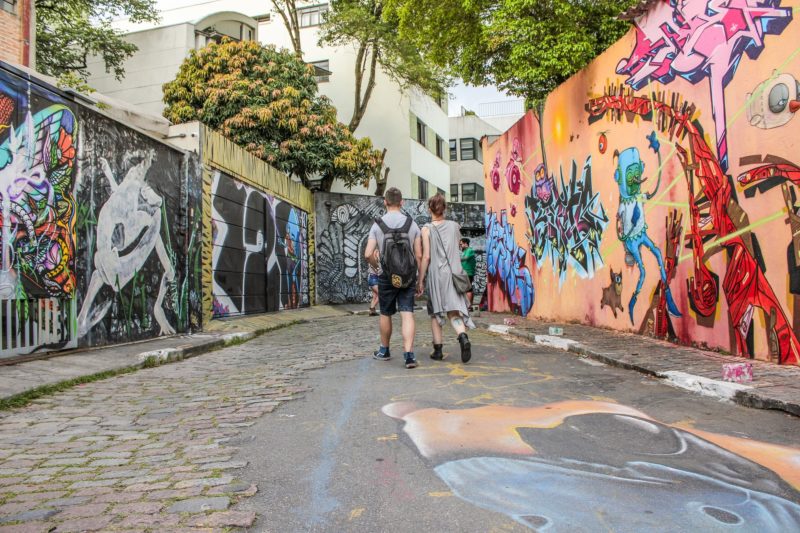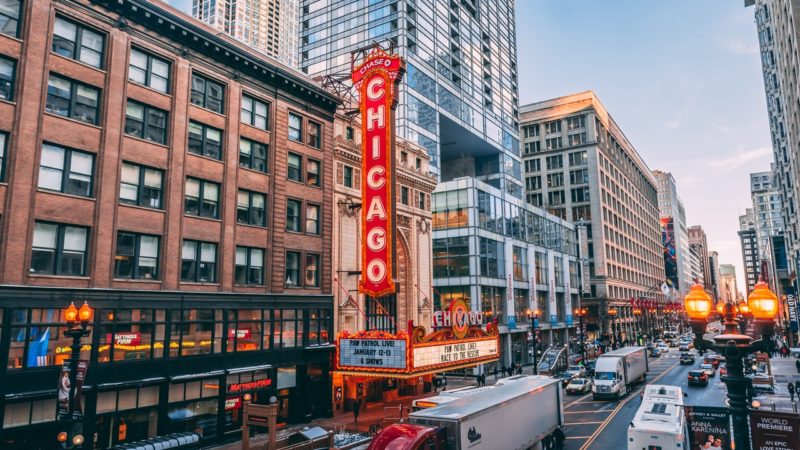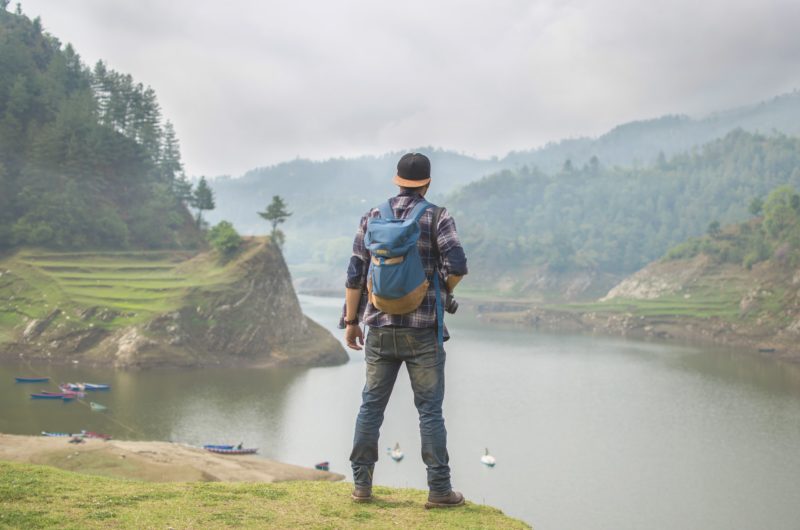In the words of Mark Twain, “Travel is fatal to bigotry, prejudice, and narrow-mindedness…” More than one hundred years later, we have learned that the byproducts of travel are also fatal, in a very tangible sense, to the living planet that Twain encouraged us to explore.
The ramifications of man’s insatiable curiosity have become too dramatic to ignore. And yet…the world beckons. So herein lies the traveler’s conundrum, “Does MY vacation have a measurable impact on the environment? If so, can any of my decisions actually help reverse the damage?” After all, the travel industry creates millions of life-supporting jobs, and regardless of whether or not my seat on the plane is empty, that flight from New York to Dubai will still take off as scheduled.
What we know for certain is this: the transportation sector as a whole contributes significantly to global warming. As travelers, we can help support positive change by understanding our impact and seeking green transportation options.
Key Statistics on Carbon Emissions in the Transportation Sector

The transportation sector produces 16.2 total percent of global greenhouse gas emissions, mostly in the dreaded form of Carbon Dioxide. To learn how we can most effectively reduce our CO2 emissions as travelers, we first need to identify the source of our personal pollution. Many environmental activists have pointed to air travel as the prime culprit, drawing international attention to the Swedish “anti-flying” movement and its grim shibboleth, “flygskam” (flight shame). Although limiting air travel is inarguably necessary for reducing greenhouse gases in the atmosphere, flying is not the single worst polluter in the transportation sector. In fact, the most toxic offender might surprise you.
According to the 2020 transportation report by the International Energy Agency, emissions from road vehicles are the most significant greenhouse gas source in the global transportation sector, accounting for nearly three-quarters of transit-related CO2 emissions. This figure includes petrol and diesel byproducts from all forms of road transport, including personal and commercial vehicles. Furthermore, sixty percent of the total road transport emissions come from passenger travel (i.e., cars, motorcycles, and buses). The remaining forty percent come from road freight (i.e., lorries and trucks).
The EPA also reports that “light-duty vehicles” (passenger cars) are most responsible for travel-related GHGs in the United States. The European Parliament reports a similar trend across the pond – that passenger cars make up 60.7% of total CO2 emissions from road transport in Europe. In short, road transport accounts for the highest percentage of GHGs in the global travel sector, and everyday driving accounts for OVER HALF of those emissions.
By contrast, aviation comprises 1.9% of the greenhouse gasses produced by the travel sector. Of that 1.9%, passenger travel creates 81% of aviation emissions. If left unchecked, the International Air Transport Association predicts that aviation emissions will grow along with airline passenger traffic at a projected pace of 3.5% per year through 2037. At this point, they estimate that 8.2 billion passengers will be traveling by plane.
So what does all of this data mean for travelers looking to reduce their environmental impact? Essentially, driving alone and flying are the most carbon-intensive options. Knowing this, we can cut down on passenger vehicle emissions by utilizing eco-friendly modes of transportation such as carpooling, biking, sharing cabs, and public transit. By minimizing car use, eliminating non-essential domestic flights, and limiting flights overall, we can significantly reduce our total emissions.
Top 3 Modes of Green Transportation
Walk, Bike, or Board

Renting from local bike shops is an excellent option for travelers because it serves the dual purpose of supporting small businesses and staying green.
If you don’t speak the local language or a bike shop isn’t available in your area, check out Spinlister.com. This platform connects users to people worldwide who are renting out their bikes, scooters, surfboards, and more! By booking this way, you might enjoy more flexibility on longer rentals and get some valuable local insights.
Finally, many metropolitan cities today have easy to access bicycle and scooter rentals, which appear quickly on a Google search. Some even have free trial periods for new users (don’t forget to cancel and provide a local address). In the U.S.A., Uber, Citibike, Lime, and Revel are popular options. London has casual hire, Ireland uses Dublin bikes … you get the idea, the internet is your friend.
Drive Smart By Ride-sharing and Carpooling

BlaBlaCar is the top carpooling platform for long-distance travel in Europe. The service specializes in long-distance travel and is available in 22 countries.
PopaRide is a Canadian app that connects you with drivers who share similar itineraries. Instead of booking a ride for yourself, you can request to join an existing ride. The service caters primarily to travelers within the country, but there are often rides between Canada and the United States.
Motar is the main carpooling app in central Europe and is the only major app to cover this region. Like Poparide, it helps users hitch a ride with someone who is already traveling along a particular route.
sRide. Are you traveling in India? sRide was designed to give riders a more social experience than the more ubiquitous alternative, Uber. Currently, sRide serves many major cities in India, including Pune, Hyderabad, Kolkata, Mumbai, Chennai, Delhi, Bangalore/Bengaluru, and others. It functions similarly to the apps listed above and includes a bikepool feature so that travelers can find cycle buddies.
RideGuru app is a global search engine for carpooling, ridesharing, and local taxi and limo services. Its price comparison tool allows you to compare prices across platforms (which vary based on time and location.) It also suggests lesser-known, local ridesharing services when applicable.
Take Advantage of Public Transit
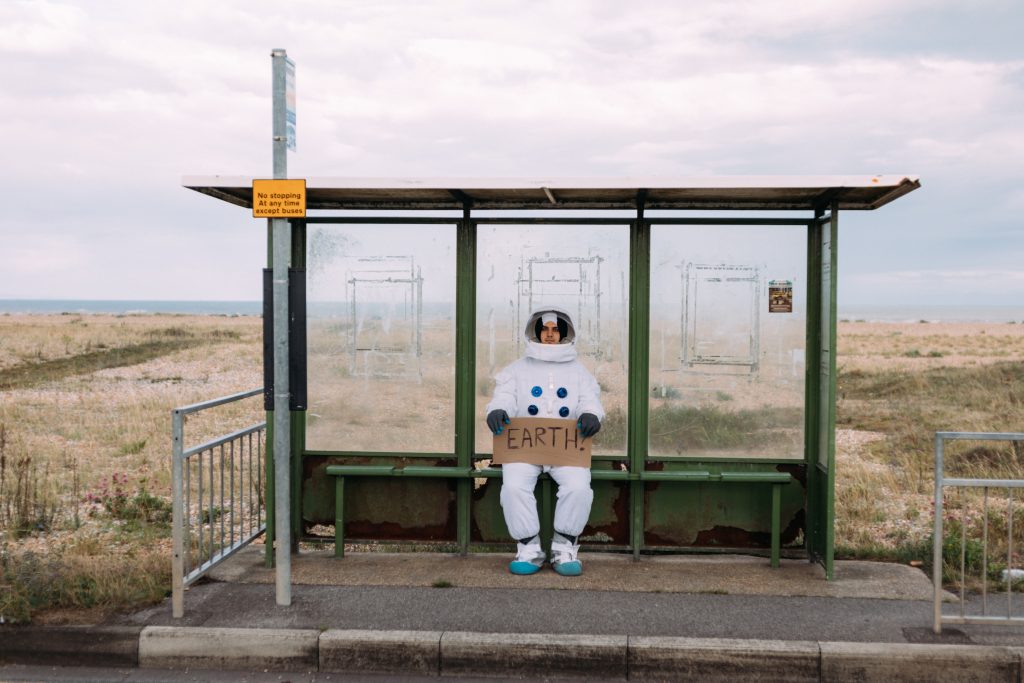
Public transportation varies greatly depending on location. It can include trains, buses, trolleys, ferries, and more! If you are unsure whether your area has safe and reliable public transportation, look to the government website for insights.
Travel and Leisure recently profiled the world’s top fifteen countries with the best public transportation. Check it out here to see if your next destination is on the list!
Long Distance Eco-Travel
Eco-friendly transit becomes a more complicated equation the farther we go. Whether traveling by land, air, or sea, long-distance travel necessitates higher GHG emissions and resource consumption. Actual emissions for each method vary greatly depending on fuel type, distance, and capacity. Until technologies can support carbon-neutral journeys on a massive scale, travelers face the unsettling dilemma of weighing their desire to see the world against their desire to protect it.
Planes

Flying has become so contentious among environmentalists that many have boycotted planes altogether. Sweedish climate activist Greta Thunberg famously sailed to a UN climate conference in New York in a zero-emissions yacht rather than flying. But since the prospect of electric aviation is barely a blip on the horizon, and not everyone has access to an intercontinental sailboat, the best action plan for concerned travelers is to stay grounded until more efficient alternatives are feasible. If your journey requires a flight, here are five tips to keep in mind:
- Some airlines are better than others when it comes to their decarbonization efforts. The following airlines have implemented some environmentally friendly policies:
- Virgin Atlantic
- Air France / KLM
- Alaska Airlines
- United Airlines
- JetBlue
- Delta
- Cathay Pacific
- Easyjet
- Ryanair
- Flybe
For more information on what makes an “eco-friendly flight,” head to the Alternative Airlines website!
2. Book direct flights whenever possible. Because taking off requires more fuel than cruising, multi-leg trips are much less fuel-efficient than direct journeys.
3. Before booking a domestic flight, consider your journey to and from the airport. In some cases, the added time and emissions would make a train or bus ticket more appealing. For example, I live in New York City and like to visit family in Pittsburgh, PA. The flight is ninety minutes versus a 6.5-hour car ride. Initially, the plane ticket seems like a no-brainer. But when I factor in an hour-long cab ride to the airport, followed by a ninety-minute flight and a forty-five-minute drive home to my parent’s house, I realize that my flight has a huge carbon footprint because of the auxiliary driving it requires. In this case, carpooling or taking a direct bus would be much more environmentally friendly. Those options would also cost less without adding too much time to my journey from start to finish.
4. Take financial responsibility for your emissions by purchasing carbon offsets. Carbon offsets allow travelers to assuage some of their flight guilt after the fact by funding carbon capture tech, planting trees, and more.
5. For more helpful tips, check out Hidden Lemur’s Guide to Flying Sustainably
Trains

Train travel can be incredibly scenic, and it encourages passengers to slow down and relish the journey itself. Compared to planes, train travel almost always wins out when it comes to GHG emissions and fuel efficiency. For example, using Ecopassenger’s carbon calculator, a BBC report shows that a train journey from London to Madrid would emit 43kg or 95lbs of CO2 per passenger. The same trip would emit 118kg by plane (or 265 kilograms including non-CO2 emissions.
As with all other modes of transport, train travel emissions vary depending on fuel, passenger load, distance, and train type. Electric trains produce about half of the emissions that diesel trains do. According to Carbon Brief, electrifying and expanding railways shows significant promise for cutting emissions globally because rail systems are uniquely poised to take advantage of renewable energy.
Boats
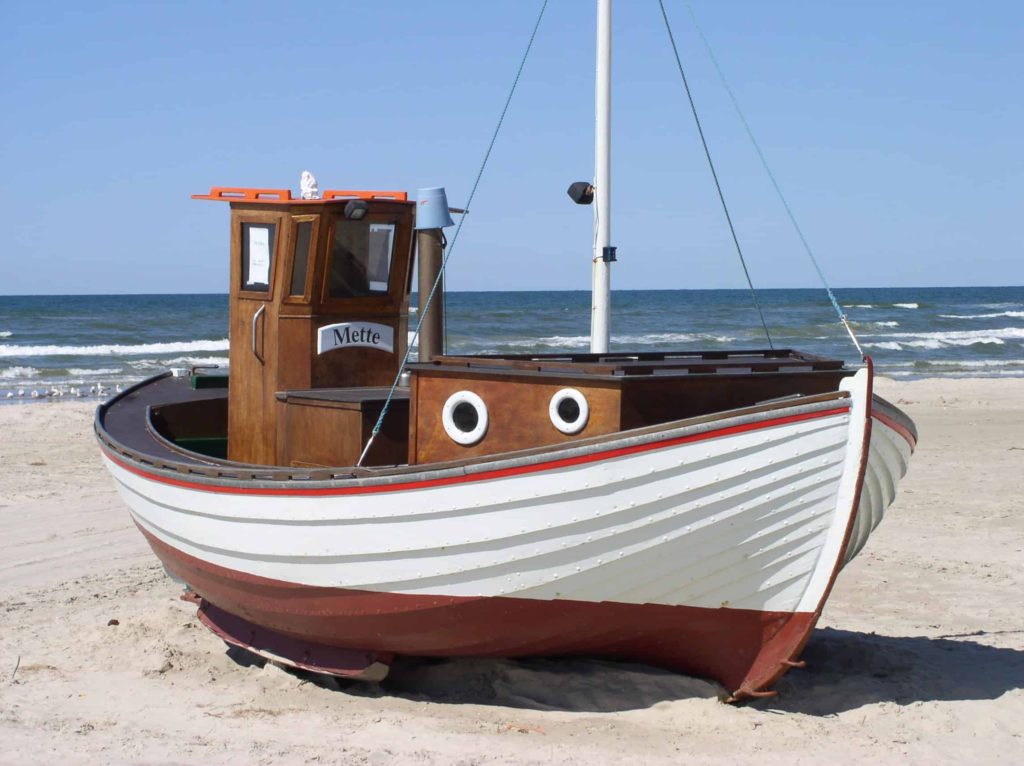
Like biking, sailing, kayaking, and paddle-boarding are practically zero-emission activities, but they aren’t viable transportation methods for most people. Neither are the less green alternatives of renting a catamaran or buying a yacht to visit friends in a neighboring state. As far as long-distance travel goes, cruise ships are the most popular form of aquatic transport. Most cruise ships, however, run on highly polluting diesel fuel. Many ships have begun using “scrubbers” to combat the fuel’s effects and remove toxic sulfur oxides from their exhaust. But these scrubbers discharge other pollutants into the ocean instead, and they’ve been banned by seven different countries and several U.S. states.
Moreover, TransportEnrivonment.org revealed that in 2017, “luxury cruise brands owned by Carnival Corporation & PLC emitted ten times more disease-causing sulfur oxide in European seas than all of Europe’s 260 million-plus passenger vehicles.” Because cruise ships demand more fuel to power their progress, they have a disproportionate effect on the climate compared to other transportation modes. Even the most efficient cruise ships emit three to four times more carbon dioxide per passenger-mile than a jet.
For now, ferries, sailboats, and small motorized boats are the greenest options for travelers.
If your travel plans involve boating, check out SailorsForTheSea.org and their guide to green boating.
Calculate Your Carbon Footprint

Any time we travel, we leave footprints in the form of greenhouse gases that can take decades to evaporate fully. As of now, purchasing carbon offsets is the only option available for trailers who want to mitigate their impact post-trip. Alternatively, calculating the potential carbon footprint of a given journey in advance can help us optimize our transit. Here are three online tools to help you reduce your carbon footprint:
1.EcoPassenger: A user-friendly internet tool for European travel. Their scientific methodology calculates and compares the energy consumption, CO2, and atmospheric exhaust emissions for planes, cars, and passenger trains in Europe.
2. Offcents: The OffCents application allows users to detect, calculate and offset carbon emissions from transportation. You can offset your carbon footprint from any number of car, train, or airplane trips. Each carbon offset funds carbon-reducing projects such as; renewable power generation, methane capture, and forest protection.
3. Carbon Fund: The Carbon fund encourages individuals and organizations to “reduce what they can and offset what they can’t.” It also offers suggestions on home, vehicle, and lifestyle offsets. Here, users can make general donations to reforestation, energy efficiency, and renewable energy projects and offset specific activities like flights and road trips.
Sustainable Transit Safety Tips
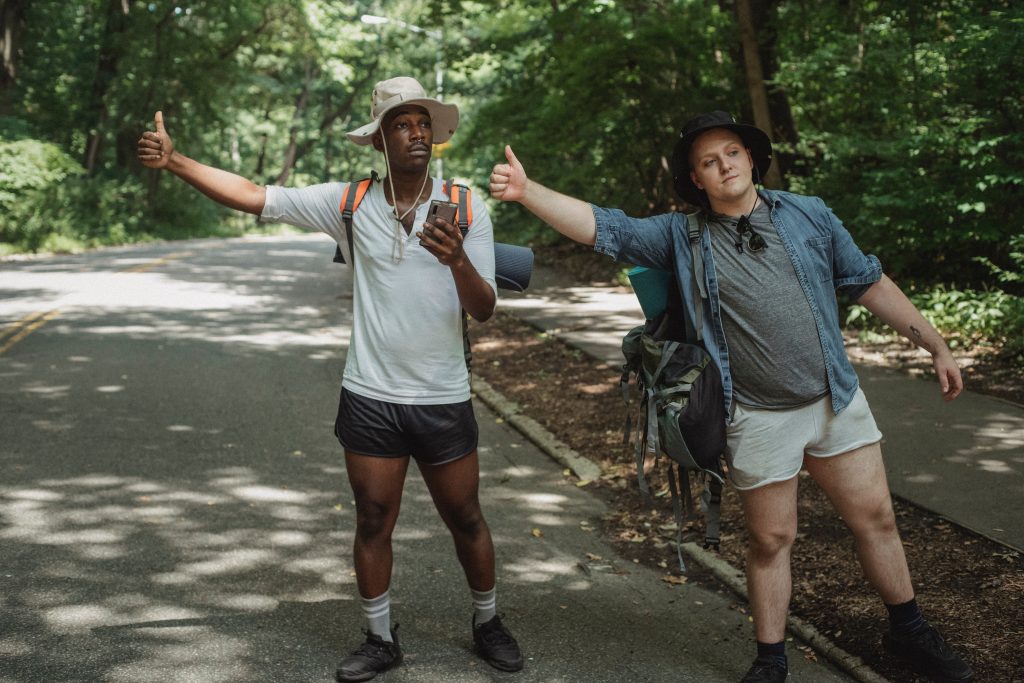
Stepping into the unknown is the most exciting element of travel for many, but it can also be the most dangerous. Because green transportation often involves sharing rides with strangers and relying on local transportation, it’s essential to do this safely! Hidden Lemur has got your back with ten tips for staying safe while traveling green:
1. Know how to pay your fare and when to pay it. Fare types vary by mode of transportation—the bus might be different than the subway, etc. You may be able to download an app or buy a weekly pass that minimizes cash exchange. The more you know in advance, the smoother your interactions will be on route.
2. Double check the departure times and hours of operation for any given service. New York City dwellers like myself enjoy twenty-four-hour options, but this is not always the case! Similarly, understand the consequences of getting caught without a ticket or proper documentation. Having a physical map and schedule of the systems you plan to use is always a great backup plan.
3. Research proper etiquette. There’s a difference between being a tourist and LOOKING like one. By familiarizing yourself with local customs, you’ll be less likely to attract the attention of scam artists or unsavory characters who prey on tourists. You’ll also make a more favorable impression on locals who might be more willing to help you out. For example, in Japan, it is considered rude to talk on your phone or to strangers on the subway. Finally, knowing the local phrases for “excuse me”, “thank you”, or “help” may come in handy when navigating crowded transportation hubs. Trusted resources like Blue Guides and Culture Smart can help you prepare for your next adventure.
4. When using a ridesharing application, try to ride with drivers who have a positive history on the app. Check out their profiles and reviews. Establish contact with the driver in advance and make sure that communication feels comfortable. Finally, let at least one other person know where you are going and when they can expect to hear from you.
5. Discern between tourist transit and local transit. (This one is more of a savings tip than a safety tip.) Sometimes, highly publicized transportation options are just expensive tourist traps, like the cable cars in San Francisco, double-decker buses and pedicabs in New York City, the classic cars in Havana, or Gondola rides in Venice. (If you are in the market for such experiences, then disregard this tip.) But some tourist traps are less evident than others, so identifying them will save you time, hassle, and money.
6. Always keep your bag in front of you to avoid people cutting into it or cutting the strap and running off with it. When walking, using public transportation, or shared cars, there’s always a chance of encountering pickpockets and other criminals.
7. Don’t put valuable things in your pockets where someone could easily take them. I often walk around my hometown with half-open bags filled to the brim, I waive my iPhone around nonchalantly, and I let my guard down because I know where I am and what I would do if I got into trouble. It’s common-sense, but I still have to remind myself not to do these things when traveling.
8. When you board a train, bus, or shuttle, pay attention to where you’re positioned and how you will exit. This is especially important in crowded areas or places where you don’t speak the language. Stay alert by asking yourself the questions we often take for granted at home: Will it be tough to get off at my stop in time? Is someone creepy standing nearby? Can I quickly exit if something happens? Will everyone in my group know when to get off? Are there any sketchy areas where I might NOT want to use public transportation?
9. Download the satellite version of the local map on your smartphone and track your location as you go. That way, you will always be able to see if you’re on the right path, even when you can’t read the signage.
10. If you feel unsure about traveling safely in a foreign country, look to the State Department website for crime reports and travel recommendations.




